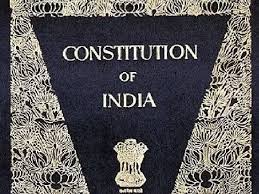GOLDEN TRIANGLE OF THE INDIAN CONSTITUTION: INTERDEPENDENCE OF FUNDAMENTAL RIGHTS
AUTHOR – UJJWAL SINGH, STUDENT AT FACULTY OF LAW, BANARAS HINDU UNIVERSITY
BEST CITATION – UJJWAL SINGH, GOLDEN TRIANGLE OF THE INDIAN CONSTITUTION: INTERDEPENDENCE OF FUNDAMENTAL RIGHTS, ILE WEEKLY REVIEW (ILE WR), 1 (3) OF 2023, PG. 33-37, APIS – 3920 – 0037 | ISBN – 978-81-964391-3-2.
Abstract
Right to Equality, Right to Freedom, Protection of life and personal liberty are the basic rights of human life and depicts the different generations of human rights and all these rights are protected by Constitution of India. These rights are often referred as golden triangle of the Indian Constitution as they are the pillars of the human existence against the state. These rights are so connected to each other that violation of one indirectly violates the other. The three articles are interpreted various times by the Court which makes it clear to the common people. The Constitution is for the people and without constant intertwining of these articles, it is impossible to achieve the ideals and goals of the Constitution. The incorporation of these rights is intended to provide a road for the people of India to lead them to the trinity of liberty, equality and brotherhood. Democracy is impossible without the existence of these rights. In this paper I am going to discuss the relationship between these three fundamental rights.
Keywords- Fundamental Rights, Golden triangle, landmark judgements, modern issues, reasonable restrictions
